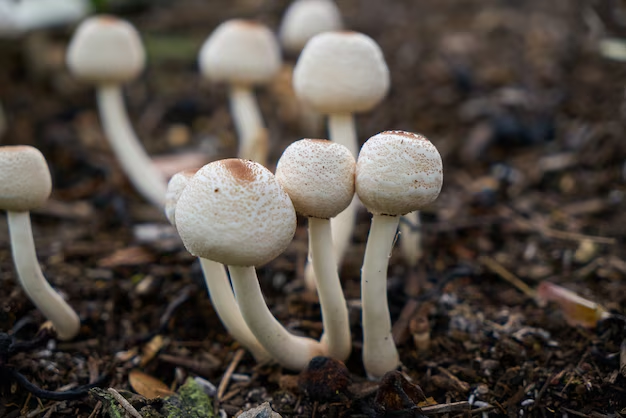How Long Can You Keep Mushrooms in the Refrigerator?
Keeping mushrooms fresh is a common concern for those who enjoy their earthy flavor and versatile culinary applications. However, their shelf life can be surprisingly short if not stored properly. If you've ever wondered how long mushrooms stay good for in the refrigerator, you're in the right place! Let's delve into everything you need to know about storing mushrooms effectively.
🥗 Understanding Mushroom Shelf Life
To determine how long mushrooms last in the fridge, it's essential to understand their composition and the factors that affect their shelf life.
What Affects Mushroom Shelf Life?
Moisture Content: Mushrooms are approximately 92% water. High moisture content makes them prone to spoilage, especially in humid environments.
Type of Mushroom: Different types of mushrooms have varying shelf lives. Common varieties, such as button, cremini, and portobello, generally have a decent shelf life under proper conditions. Exotic varieties like shiitake or oyster mushrooms might have slightly different storage needs.
Condition and Freshness: The freshness of mushrooms at the time of purchase significantly affects how long they'll last. Ideally, buy mushrooms that are firm, free from dark spots or slimy textures, and have a pleasant earthy scent.
👩🍳 How to Store Mushrooms for Maximum Freshness
Proper storage techniques can extend the shelf life of mushrooms and keep them tasting their best.
Refrigeration Tips
Leave Them Unwashed: To extend shelf life, store mushrooms unwashed. Washing before storage can add unnecessary moisture, speeding up spoilage.
Use the Right Container: Opt for a paper bag or a ventilated container. Avoid plastic bags, which can trap moisture and promote mold growth.
Ideal Fridge Conditions: Store mushrooms in the crisper drawer of your refrigerator. This area maintains a consistent cool temperature and protects them from warmer air when the fridge door is opened.
Keep Away from Other Produce: Mushrooms can absorb ethylene gas produced by certain fruits and vegetables, which accelerates ripening and spoilage. Keep them separated to prevent this.
Freezing Mushrooms
For long-term storage, freezing is an option, albeit with some trade-offs in texture.
Blanch Before Freezing: To preserve flavor and texture, blanch mushrooms briefly in boiling water, then plunge them into ice water.
Pat Dry and Slice: Once cooled, pat mushrooms dry and slice them if preferred.
Flash Freeze: Lay mushrooms in a single layer on a baking sheet to pre-freeze before transferring to airtight containers or freezer bags. This prevents them from clumping together.
Drying Mushrooms
Drying can be an excellent way to store mushrooms if you have a dehydrator.
Choose Appropriate Varieties: White button or portobello mushrooms are less suited for drying compared to shiitake or porcini.
Slice Evenly: Uniform slices ensure even drying.
Store Properly: Once fully dried, store mushrooms in airtight containers in a cool, dark place.
🕰️ How Long Do Mushrooms Last?
- Fresh Mushrooms: Typically last 5-7 days in the refrigerator when stored properly.
- Cooked Mushrooms: Can be refrigerated for 3-5 days.
- Frozen Mushrooms: Best consumed within 10-12 months for optimal quality.
- Dried Mushrooms: Can last indefinitely if stored in ideal conditions, although using them within a year is recommended for best flavor.
🔍 Identifying Spoiled Mushrooms
Recognizing the signs of spoilage ensures that you don't consume mushrooms that have gone bad. Here’s what to look for:
- Sliminess: A slippery film is a clear indication of spoilage.
- Dark Spots: While some discoloration can be natural, extensive darkening suggests they've overstayed their welcome.
- Wrinkling: A sign that mushrooms have dehydrated beyond a usable point.
- Off Odor: An unpleasant or strong scent indicates spoilage.
🍄 Creative Uses for Mushrooms Near Expiry
Before mushrooms approach the end of their fridge life, use them creatively in various dishes.
- Mushroom Stir-Fry: A quick and tasty way to use up a medley of vegetables, including mushrooms.
- Mushroom Soup: Perfect for transforming slightly wilted mushrooms into a savory delight.
- Pizza Toppings: Fresh or sautéed, mushrooms make for delicious pizza toppings.
- Mushroom Sauce: A creamy or broth-based sauce can enhance pasta dishes or meats.
👨🍳 Practical Summary: Tips for Storing Mushrooms
Here's a quick recap to keep your mushrooms fresher, longer:
- 🛍️ Purchase Wisely: Opt for fresh, firm, blemish-free mushrooms.
- ❌ Avoid Washing Pre-Storage: To prevent moisture trap and spoilage.
- 📦 Use Paper Bags: For natural moisture absorption and airflow.
- 🌀 Refrigerate Correctly: Store in crisper drawer away from ethylene producers.
- ❄️ Freeze Effectively: Blanch before freezing to maintain quality.
- 🌾 Dry If Possible: Dry certain varieties for virtually indefinite storage.
These strategies can significantly enhance the freshness and usability of mushrooms, ensuring they remain a flavorful staple in your kitchen.
By understanding how mushrooms behave both on the shelf and in your refrigerator, you're better equipped to enjoy them at their peak, waste less, and save money in the long run. Enjoy these versatile fungi and experiment with storage techniques that best fit your lifestyle and culinary needs!
